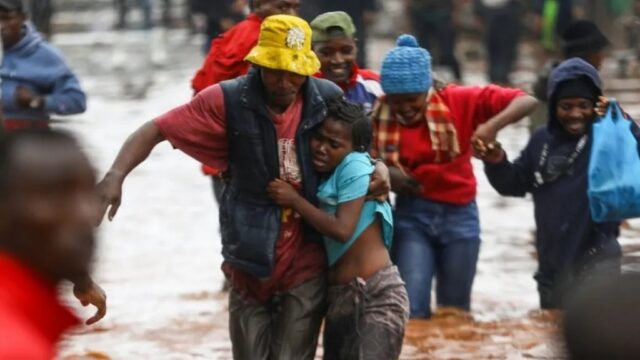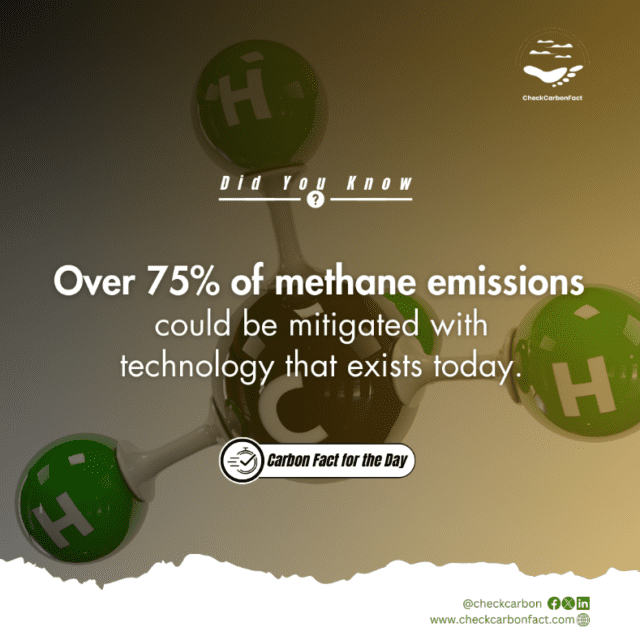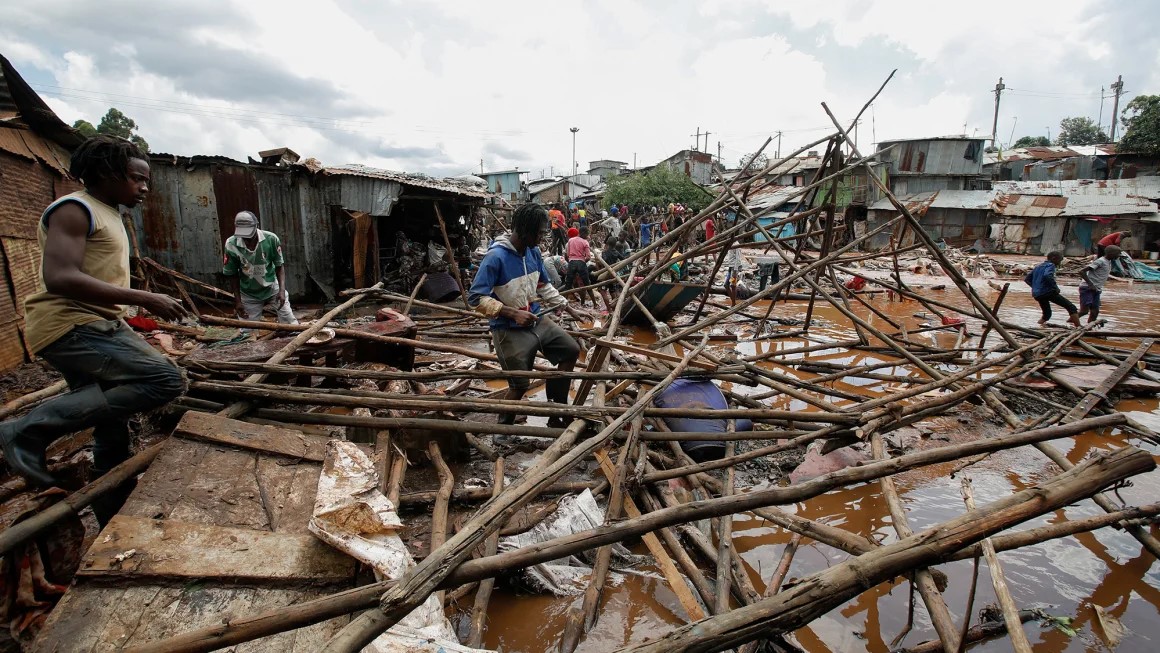In the wake of relentless rains, Kenya finds itself grappling with a catastrophe of unprecedented proportions. The relentless onslaught of heavy rains and subsequent flooding has wreaked havoc across the country, leaving a trail of destruction and despair in its wake. The toll has been staggering, with lives lost, communities displaced, and livelihoods shattered. In this blog post, we delve into the grim reality of Kenya’s battle against the forces of nature, exploring the extent of the damage, ongoing relief efforts, and the resilience of affected communities in the face of adversity.
What is the situation like in Kenya?
As of 27th April, report confirms a total of 76 deaths, in addition to 29 wounded individuals and 19 others still missing. The torrential downpour, which began in March, shows no sign of abating, exacerbating the already dire situation. Nairobi, the heart of Kenya, bears the brunt of this natural disaster, with a staggering death toll of 32 souls and over 16,000 households displaced. The numbers paint a grim picture of displacement and despair, with over 131,000 individuals rendered homeless. Families torn from their homes seek refuge in makeshift camps erected by government and humanitarian agencies across the country, numbering at an alarming 50.
A tragedy struck with particular poignancy in Makueni County, where a truck laden with passengers was mercilessly swept away by the unforgiving currents. The Kenyan Red Cross recounts this harrowing incident, one that underscores the sheer force and devastation wrought by the floods. Miraculously, amidst the chaos, more than 300 lives have been saved by the valiant efforts of rescue teams.
The Human Cost: Beyond Numbers
Behind the statistics lie human stories of loss, resilience, and vulnerability. Families torn apart, homes washed away, and livelihoods destroyed underscore the profound impact of climate-induced disasters on communities. The images of people stranded on rooftops, roads submerged in water, and children rescued from flood waters depict the grim reality faced by millions across the country. The humanitarian response, while commendable, struggles to cope with the scale of the crisis, highlighting the urgent need for proactive measures to mitigate future disasters.
How has the authority responded?
The President, William Ruto, recognising the gravity of the situation, has authorised emergency measures to evacuate vulnerable communities residing along riverbanks and other high-risk areas. The imperative to ensure the safety of citizens necessitates decisive action, even if it entails coercive relocation. A multi-agency collaboration is underway, aiming to provide essential aid and relocate citizens away from perilous zones susceptible to flooding.
The Kenya Meteorological Department’s advisory forewarns of prolonged heavy rainfall, with Nairobi bearing the brunt of the onslaught. Despite hopes for a respite, the forecast portends continued precipitation, albeit with a slight reprieve anticipated by Sunday. The relentless assault of rain and floods has not spared neighbouring Tanzania and Burundi, where lives have been lost and communities displaced.
The inundation of roads in Nairobi transforms thoroughfares into treacherous waterways, paralysing transportation networks and isolating communities. The city grapples with the monumental challenge of navigating through submerged streets, exacerbating the already dire circumstances. Images of residents stranded atop their rooftops in the Mathare slum evoke a poignant narrative of resilience amidst adversity.

Description: The UN says more than 40,000 have been forced from their homes
Source: BBC
Climate Change Amplifying the Crisis
While natural disasters like floods are not uncommon in Kenya, the severity and frequency of these events are exacerbated by climate change. The changing climate patterns, characterised by erratic rainfall and extreme weather events, have intensified the impact of heavy rains, leading to catastrophic flooding.
As the region grapples with the aftermath of this calamity, broader climatological phenomena come into focus. The Indian Ocean Dipole (IOD), often likened to the Indian Ocean’s version of El Niño, emerges as a significant factor exacerbating the intensity of rainfall in East Africa. A convergence of positive IOD and El Niño patterns amplifies the deluge, as witnessed during the catastrophic events of 1997 and 1998.
Towards Climate Resilience: A Call to Action
Climate change presents a formidable challenge that demands a proactive and collaborative response. In the aftermath of the devastating floods in Kenya, it’s evident that building climate resilience must be a top priority for governments, communities, and stakeholders at all levels. The call to action extends beyond immediate relief efforts to long-term strategies aimed at mitigating the impact of future disasters. Here’s a closer look at key steps towards climate resilience:
- Policy Interventions: Governments play a crucial role in shaping policies that prioritise climate adaptation and mitigation. This includes integrating climate considerations into national development plans, enacting legislation to reduce greenhouse gas emissions, and promoting sustainable land use practices. Establishing robust regulatory frameworks and incentivizing climate-smart investments can foster a more resilient economy and society.
- Community-Based Adaptation: Empowering local communities to cope with climate-related risks is essential for building resilience on the ground. Community-based adaptation initiatives, guided by indigenous knowledge and local expertise, can enhance preparedness, reduce vulnerability, and strengthen social cohesion. Investing in climate-resilient infrastructure, such as flood-resistant housing, water management systems, and early warning mechanisms, can bolster communities’ capacity to withstand extreme weather events.
- Ecosystem-Based Approaches: Nature-based solutions offer cost-effective and sustainable strategies for climate resilience. Restoring degraded ecosystems, such as forests, wetlands, and mangroves, not only sequesters carbon but also provides natural buffers against floods, storms, and erosion. Protecting biodiversity, conserving natural habitats, and promoting sustainable agriculture can enhance ecosystem services and safeguard livelihoods in the face of climate uncertainty.
- Capacity Building and Knowledge Sharing: Strengthening institutional capacity and knowledge sharing is vital for effective climate resilience. Investing in education, training, and awareness-raising programmes can enhance communities’ understanding of climate risks and adaptation strategies. Building partnerships between government agencies, civil society organisations, academia, and the private sector facilitates the exchange of best practices, lessons learned, and innovative solutions for climate resilience.
- Investment in Research and Technology: Advancing scientific research and technological innovation is critical for addressing the complex challenges posed by climate change. Investing in climate modelling, risk assessment tools, and early warning systems improves our ability to predict and respond to extreme weather events. Leveraging digital technologies, such as satellite imagery, geographic information systems (GIS), and mobile applications, enhances data collection, monitoring, and decision-making processes in disaster-prone areas.
- Promotion of Climate Financing: Mobilising adequate and accessible climate finance is essential for scaling up adaptation efforts and building resilience in vulnerable communities. Governments, international organisations, and development partners must prioritise climate funding mechanisms that prioritise adaptation, particularly for the most vulnerable populations. Innovative financing instruments, such as climate insurance, green bonds, and resilience funds, can incentivise investments in climate-resilient infrastructure and livelihoods.
- Advocacy and Public Engagement: Raising awareness and mobilising public support are integral components of effective climate action. Civil society organisations, grassroots movements, and youth activists play a crucial role in advocating for ambitious climate policies, fostering behavioural change, and holding decision-makers accountable. Engaging diverse stakeholders in climate dialogue, participatory decision-making processes, and community-driven initiatives fosters a sense of ownership and collective responsibility for building a more resilient future.
Conclusion: A Path Forward
The floods in Kenya serve as a stark reminder of the urgent need for concerted global action to combat climate change. As the world confronts the existential threat posed by environmental degradation, no nation can afford to remain complacent. Kenya’s experience underscores the interconnectedness of climate change, environmental sustainability, and human well-being. Only through collective effort, solidarity, and innovation can we chart a course towards a more resilient and sustainable future for generations to come.
In the wake of this tragedy, let us not only mourn the lives lost but also galvanise our resolve to tackle the root causes of climate change and build a more resilient world for all. The time for action is now.
About CheckCarbonFact
CheckCarbonFact is a social accountability platform for promoting sustainability and responsible climate action by citizens, businesses and government. Read more about us here: https://checkcarbonfact.com/about/
Carbon Fact for the Day

Found it interesting and would like more in the mail?




